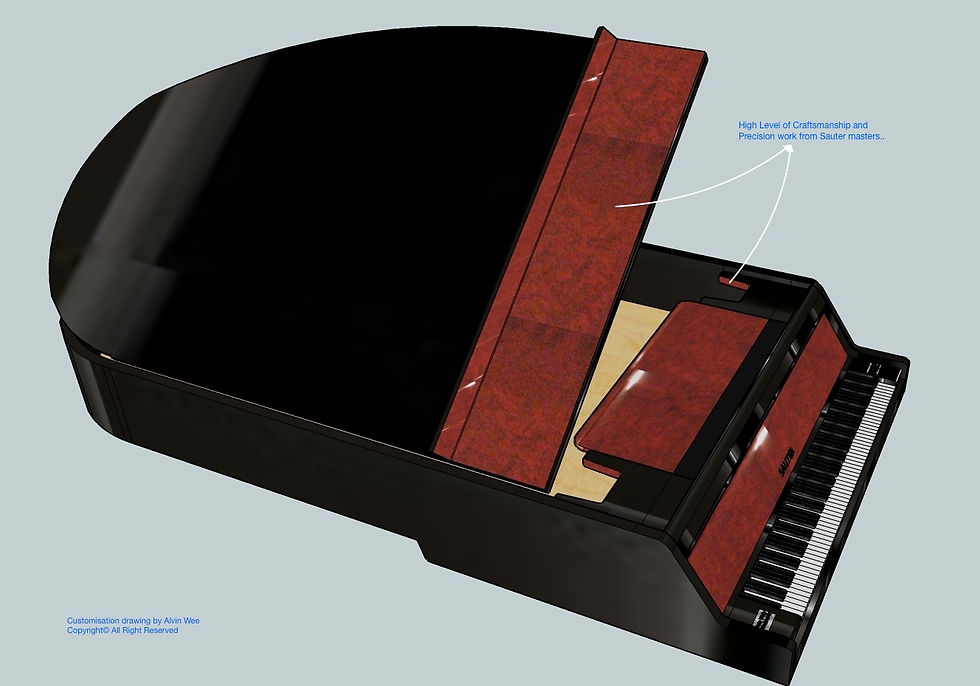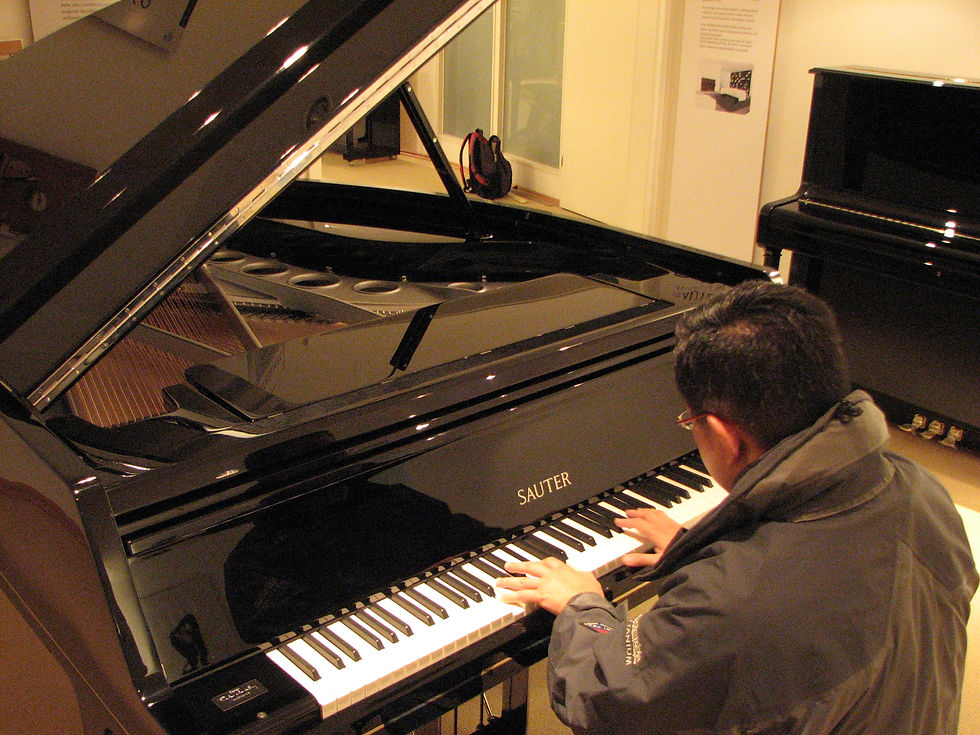


“I knew this was the right one when I played it, so I was already thinking to myself, oh no… what have I got myself into!”
Dr Gilbert Er
Dr Gilbert Er with his customised Sauter Ambiente
PICTURE by YEN MENG JIIN

From popular ballads to light jazz; from gospel songs to making up his own compositions, playing the piano is Gilbert Er's way of unwinding at home.
These days though, there's even more reason to tinkle the piano keys, especially when he's got a one-of-a-kind customised Sauter semi-grand piano taking up half of his living room .
'I play whenever I can. Since my work schedule is rather erratic,' says the doctor at a private hospital's accident and emergency department, while running his hands lovingly over his gleaming new baby.
In fact, Dr Er might have to peel himself away from his Ambiente these days, as it's the only designer Sauter piano of its kind in Singapore, and one of fewer than 20 in the world.
'Even the piano movers whipped out their phone cameras to take a picture of it when it was assembled! They'd never seen a piano like this,' he says.
Sauter is a German piano manufacturer which specialises in customised pianos and makes only about three to four units of its Peter Maly-designed Ambiente a year since the design was launched in 2006.
The 230cm-long, 540kg piano is shaped like a baby grand, but minus the part which curves in as it's rounded all the way, like a parabola.
It has a mahogany black exterior, but parts are inlaid with reddish brown bubinga wood - upon Dr Er's request.
2010
Dr Gilbert Er
Sauter Ambiente


"It might be around the cost of a luxury car, but it's definitely something that will go up in value in the future, unlike a car! And if I didn't buy it now, it'll only cost more later, seeing as things like wood are becoming a scarce commodity."
Dr Gilber Er
The Ambiente's low notes are rich and rounded, while the higher register notes are clear but not shrill, and most of all, the piano can really 'communicate', he feels, rather than being the standard-issue piano with little life in it.
But he'd have to find the space for it in his family house in the Upper Bukit Timah area, and also wait another six to seven months for the company to customise a few things, not to mention the major bump up in cost - to go from an upright to a semi-grand.
With these thoughts milling around in his head, Dr Er took the plunge as he was leaving Germany. “In fact, I called from the airport, to confirm that I wanted it!” he says. He'd just been there for four days.
But it was a decision he doesn't regret, he says. “It might be around the cost of a luxury car, but it's definitely something that will go up in value in the future, unlike a car! And if I didn't buy it now, it'll only cost more later, seeing as things like wood are becoming a scarce commodity,” he justifies. The soundboard for example is made from Ciresa wood, the type of wood used for the Stradivarius violin which comes from Italian forests.
The Ambiente finally arrived at his house last September, and he had to rearrange his furniture around it as it takes up half of the living room now.
He also had to buy two dehumidifiers for the room, so that the humidity level is kept below 60 per cent, for the piano's sake.
'It's not good to heat up the piano from within as that can crack the wood,' he explains.
He's now playing the piano daily - in anticipation of what it'll sound like in five years, which is about when the piano would have 'settled in' in its new Singapore home, and become fully matured.
'The piano is a living thing,' the musical doctor declares.
This article was first published in The Business Times, Singapore
















